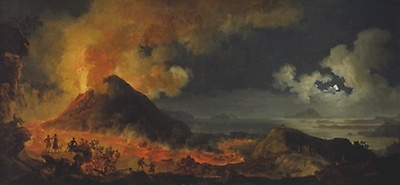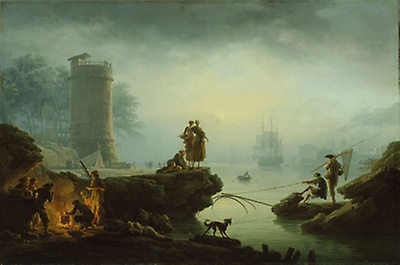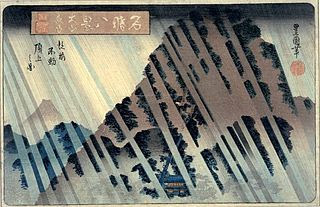Deborah J. Ross's Blog, page 68
April 12, 2019
Short Book Reviews: Fighting Amorphous Monsters Without Using Magic
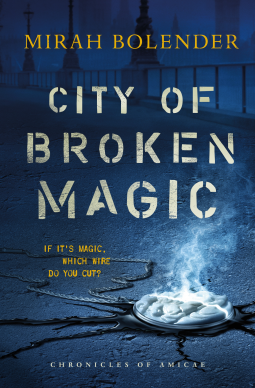 City of Broken Magic, by Mirah Bolender (Tor)
City of Broken Magic, by Mirah Bolender (Tor)In this fairly recognizable post-Industrial Revolution world, magic is both friend and foe. Enchanted amulets are useful in all sorts of ways, but let one become empty or damaged, and an infestation of vicious magic, taking the form of a jellyfish-like “monster” will erupt, consuming everything in its path. In the city of Amicae, as elsewhere, Sweepers clear out such infestations, but they are few in number. Two, to be precise, the notorious, irascible, scoundrel-with-a-heart-of-gold, Clae Sinclair, and his apprentice, Laura. Soon they acquire a third, one of the very few humans to possess innate magic. But the situation in Amicae is unstable, with government propaganda proclaiming that there is no infestation problem and Sinclair’s team fighting an increasingly desperate battle with the odds stacked against them.
I have mixed feelings about this book. On the one hand, the system of magic and its evil manifestations is reasonably fresh, and I liked the characters a great deal, especially how their relationships evolved over time. On the other hand, I found much of the magical terminology vague and confusing. “Monster” could mean anything from a tyrannosaur to Cookie Monster to a serial killer to a thing-that-goes-bump-in-the-night. I never got a clear visual of these, and I really wish they had a better, more descriptive name. Amorphic, toxic ink-squid would do, amorphs or ATIS for short. Likewise, “Gin” and “kin” (don’t ask me why one is capitalized and not the other; I haven’t a clue) and a host of other terms for magical energy.
My biggest disappointment, though, was that I thought the story was setting up for a romance between Laura and Clae. She’s beset by other people in her life who want her to be less than her potential because of her sex, except for Clae, who consistently demands her best and refuses to coddle her. A dozen subtle moments make clear her growing tenderness for him, her compassion for his tortured past, and her maturity within their relationship. Perhaps the author saw that as an easy, predictable outcome, but I relish stories where characters force one another to grow, and then to grow in love.
The usual disclaimer: I received a review copy of this book, but no one bribed me to say anything in particular, either way, about it.

Published on April 12, 2019 01:00
April 11, 2019
[link] Ursula K. Le Guin Reviews Dreamsnake by Vonda N. McIntyre
If you, too, are feeling nostalgic about the passing of two iconic women writers, you'll find the following review heart-warming, like sitting in on two old friends chatting about a favorite book.
Dreamsnake was an especially memorable book for me. I loved it for its wonderful bond between healer and snakes (I'm not at all phobic about snakes, so their inclusion was a plus), the heroine's courageous sexuality, the compassion and danger and just plain strangeness of the world. I read my first, paperback copy into tatters and then got a hardcover one.
Here's the beginning of Ursula's review. You can read the whole thing here.
The Wild Winds of Possibility
Vonda N. McIntyre’s Dreamsnake
Reviewed by Ursula K. Le GuinDreamsnake is in some ways a strange book, unlike any other in science fiction, which may explain the even stranger fact that it’s not currently in print (except on line at https://bookviewcafe.com/bookstore/book/dreamsnake/).When people ask me what sf books influenced me or what are my favorites, I always mention Dreamsnake. Invariably I get a warm response — “Oh yes!” And people still tell me how much the book meant to them when they first read it and ever since. But these days, many younger readers don’t know it exists.
The short story the book was based on won the 1973 Nebula; the book was an immediate success; it became and still is beloved. Its moral urgency and rousing adventure story are not at all dated. It should have gone from one paperback reprint to another.Why didn’t it?I have some theories.
Dreamsnake was an especially memorable book for me. I loved it for its wonderful bond between healer and snakes (I'm not at all phobic about snakes, so their inclusion was a plus), the heroine's courageous sexuality, the compassion and danger and just plain strangeness of the world. I read my first, paperback copy into tatters and then got a hardcover one.
Here's the beginning of Ursula's review. You can read the whole thing here.
The Wild Winds of Possibility
Vonda N. McIntyre’s Dreamsnake
Reviewed by Ursula K. Le GuinDreamsnake is in some ways a strange book, unlike any other in science fiction, which may explain the even stranger fact that it’s not currently in print (except on line at https://bookviewcafe.com/bookstore/book/dreamsnake/).When people ask me what sf books influenced me or what are my favorites, I always mention Dreamsnake. Invariably I get a warm response — “Oh yes!” And people still tell me how much the book meant to them when they first read it and ever since. But these days, many younger readers don’t know it exists.
The short story the book was based on won the 1973 Nebula; the book was an immediate success; it became and still is beloved. Its moral urgency and rousing adventure story are not at all dated. It should have gone from one paperback reprint to another.Why didn’t it?I have some theories.

Published on April 11, 2019 01:00
April 10, 2019
Today's Moment of Art
Published on April 10, 2019 01:00
April 8, 2019
Citadels of Darkover Author Interview: Robin Rowland
Coming in May 2019
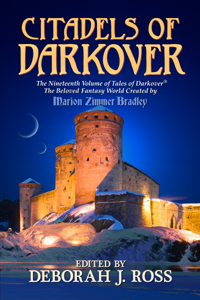 Strongholds of rock . . . fortresses of the spirit . . . a planet set apart . . .
Strongholds of rock . . . fortresses of the spirit . . . a planet set apart . . .
Citadels can be psychic, emotional, and cultural as well as military, and the wonderfully imaginative contributors to this volume have taken the basic idea and spun out stories in different and often unexpected directions.
Pre-order it at:
ePub https://books2read.com/u/4XRR0N
Kindle https://amzn.to/2TmBBW0
Here I chat with contributor Robin Rowland:
Deborah J. Ross: How did you become a writer?Robin Rowland: When I was in Grade 2, our teacher told us one day to write a two foolscap page short story. I wrote a sequel to a Tarzan comic I had been reading. After class the teacher told me it was one of the best in the class and that I should be a writer. I took her advice.
DJR: What authors inspired you?RR: Fiction authors who have inspired me are Rosemary Sutcliff, Andre Norton, Marion Zimmer Bradley and Robert A. Heinlein. In narrative non-fiction the authors who inspired me are Barbara Tuchman, Mark Bowden and Catherine Drinker Bowen.
DJR: What about the world drew you in? RR: I grew up in the mountainous coast of British Columbia in a small town called Kitimat. In a local First Nations (Native Canadian) language Kitimat means “people of the snow.” The valley is at the end of an 80 kilometer fjord from the Pacific Ocean that has a unique micro climate. Four times we’ve had a record one day snowfall for all of Canada. The weather can change to warm to wet in a half hour. Winters can see snow up to the roof of a two story ranch style house or sometimes so little snow I only use a half jug of snow melter. Summers can either be dreary, overcast and wet or warm to sunny and very hot with the occasional drought. So for me, that unique micro climate of the Kitimat valley is perhaps the closest thing on Terra to Darkover.
DJR: Tell us about your introduction to Darkover. RR: My family moved to Toronto when I was fifteen. As my only income at the time was an allowance, I haunted a huge used book store in downtown Toronto called “Old Favourites” which had a large science fiction section. I bought Star of Danger, the boys were my own age and the description of Darkover made the planet sound like the home town I had just left. I kept buying Darkover books, first used and then when I got after school jobs, new releases from a variety store near my home which always stocked with a lot of science fiction in the late 1960s. What convinced me that I loved the planet was Darkover Landfall, which again, reminded me of Kitimat.
DJR: What inspired your story in Citadels of Darkover? How did you balance writing in someone else’s world and being true to your own creative imagination?RR: Like many people I have had a fascination with dinosaurs since I was a little kid.I’ve also been fascinated with stories of Celtic and pre-Celtic history ranging from Stonehenge to the Druids, the Roman occupation from the early invasions to the Rome’s abandoning the island; the Saxon invasions. That includes the stories of King Arthur, whether the more romantic versions or the those now set in an as accurate as possible historical context and, of course, Marion Zimmer Bradley’s Mists of Avalon.
When I received the invitation to contribute to Citadels, immediately the story of King Vortigern, his castle and the Welsh Dragon, which is related to the Arthurian legend, popped out of my subconscious. The red dragon storyis much older, a different version with the dragons but no castle is found in the Mabinogion.
How to transfer that to Darkover?
I remembered my visit years decades earlier to a famous citadel, at Mycenae, home of Agamemnon, the later the bloody Atreid cycle and other famous stories of Greek mythology. If you’re a backpacker, you take a bus to Mycenae. Then you walk, as the ancients did, to the citadel. From the highway bus stop (rather than from a tour bus parking lot) Mycenae, at first,doesn’t appear that impressive even though the citadel is at the top of a 900 foot hill/acropolis.
Once you pass through the Lion Gate and stand by the citadel walls, you can see the entire surrounding Argive valley. You immediately know why Mycenae became a citadel and the capital of a small empire. It dominated the valley and the nearby seas. So one possibility was a bloody Darkover Comyn family struggle in the Ages of Chaos.
The Argive doesn’t really resemble Darkover; no towering snow peaked mountains.
That’s when another project I am working on gave me an idea. A friend and I are writing a boater’s guide book to Douglas Channel-- that fjord that connects Kitimat to the sea. I had just finished a first draft of a chapter on the geology of the fjord.
During the Mesozoic era, beginning in the early Jurassic, the same plate tectonics that produce earthquakes created chain after chain of volcanic islands ranging from what today is now California all the way to Alaska. The plate tectonics pushed those islands against the North American plate. The collisions created mountain chain after mountain chain: the Coast Ranges, the Cascades and the Sierras.
Geologists have identified one of the mountains that overlooks the Kitimat Valley as a long extinct island volcano from the Jurassic. The way the geology works, what is left of tha dinosaur-era volcano is mixed in with other more geologically more recent mountains.
That’s when I had the inspiration. How were the Hellers formed? What if that giant wall around the world had once been a chain of offshore mountains?
The red dragon of Wales resurfaced. Dragons=Dinosaurs.
So a paleontologist visits Darkover? What would he be looking for? What would she find? First going back to the Hellers, Mesozoic fossils are extremely rare in northwestern British because, as I say in the story, the mountain folding and metamorphizing has destroyed them. There are someisolated locations which have ammonite fossils but nothing larger.
The last piece of the puzzle is a remarkable fossil site in a British Columbia inland upland plateau surrounded by mountains called the Bulkley Valley. Driftwood Canyon, near the town of Smithers, which the hero visits in the story, has remarkable fossils not from the Mesozoic, but the Eocene about 50 million years ago. The fossils, like the ones in the story, are near photographic perfect. That’s because where the canyon is now was once a lake where the lake bottom consisted of very fine silt. From time to time nearby volcanic eruptions would cover the silt. Luckily the volcanic ash was made up of very fine particles. Anything that died and fell into that lake, from the ancestor of the salmon, to bird’s feathers to a branch with spruce needles are minutely preserved. For example, the tiny, fine legs, wings and proboscis of an ancient mosquito preserved in the rock look just like a modern mosquito beside it on a table.
The Bulkley Valley became the Vale of Valiant, with a Mycenae-like citadel in the center of the valley; a valley where luck preserved fossils on Darkover that were otherwise destroyed when the Hellers were raised.
DJR: What have you written recently? RR: I have written a short story “Aranzazu Banks” that takes place off the coast of British Columbia, which will appear in the “magic-realism horror” anthology Canadian Dreadful later in 2019.
DJR: What lies ahead for you? RR: I am working on fantasy novel built around the climate crisis and a couple of non-fiction book

 Strongholds of rock . . . fortresses of the spirit . . . a planet set apart . . .
Strongholds of rock . . . fortresses of the spirit . . . a planet set apart . . .Citadels can be psychic, emotional, and cultural as well as military, and the wonderfully imaginative contributors to this volume have taken the basic idea and spun out stories in different and often unexpected directions.
Pre-order it at:
ePub https://books2read.com/u/4XRR0N
Kindle https://amzn.to/2TmBBW0
Here I chat with contributor Robin Rowland:
Deborah J. Ross: How did you become a writer?Robin Rowland: When I was in Grade 2, our teacher told us one day to write a two foolscap page short story. I wrote a sequel to a Tarzan comic I had been reading. After class the teacher told me it was one of the best in the class and that I should be a writer. I took her advice.
DJR: What authors inspired you?RR: Fiction authors who have inspired me are Rosemary Sutcliff, Andre Norton, Marion Zimmer Bradley and Robert A. Heinlein. In narrative non-fiction the authors who inspired me are Barbara Tuchman, Mark Bowden and Catherine Drinker Bowen.
DJR: What about the world drew you in? RR: I grew up in the mountainous coast of British Columbia in a small town called Kitimat. In a local First Nations (Native Canadian) language Kitimat means “people of the snow.” The valley is at the end of an 80 kilometer fjord from the Pacific Ocean that has a unique micro climate. Four times we’ve had a record one day snowfall for all of Canada. The weather can change to warm to wet in a half hour. Winters can see snow up to the roof of a two story ranch style house or sometimes so little snow I only use a half jug of snow melter. Summers can either be dreary, overcast and wet or warm to sunny and very hot with the occasional drought. So for me, that unique micro climate of the Kitimat valley is perhaps the closest thing on Terra to Darkover.
DJR: Tell us about your introduction to Darkover. RR: My family moved to Toronto when I was fifteen. As my only income at the time was an allowance, I haunted a huge used book store in downtown Toronto called “Old Favourites” which had a large science fiction section. I bought Star of Danger, the boys were my own age and the description of Darkover made the planet sound like the home town I had just left. I kept buying Darkover books, first used and then when I got after school jobs, new releases from a variety store near my home which always stocked with a lot of science fiction in the late 1960s. What convinced me that I loved the planet was Darkover Landfall, which again, reminded me of Kitimat.
DJR: What inspired your story in Citadels of Darkover? How did you balance writing in someone else’s world and being true to your own creative imagination?RR: Like many people I have had a fascination with dinosaurs since I was a little kid.I’ve also been fascinated with stories of Celtic and pre-Celtic history ranging from Stonehenge to the Druids, the Roman occupation from the early invasions to the Rome’s abandoning the island; the Saxon invasions. That includes the stories of King Arthur, whether the more romantic versions or the those now set in an as accurate as possible historical context and, of course, Marion Zimmer Bradley’s Mists of Avalon.
When I received the invitation to contribute to Citadels, immediately the story of King Vortigern, his castle and the Welsh Dragon, which is related to the Arthurian legend, popped out of my subconscious. The red dragon storyis much older, a different version with the dragons but no castle is found in the Mabinogion.
How to transfer that to Darkover?
I remembered my visit years decades earlier to a famous citadel, at Mycenae, home of Agamemnon, the later the bloody Atreid cycle and other famous stories of Greek mythology. If you’re a backpacker, you take a bus to Mycenae. Then you walk, as the ancients did, to the citadel. From the highway bus stop (rather than from a tour bus parking lot) Mycenae, at first,doesn’t appear that impressive even though the citadel is at the top of a 900 foot hill/acropolis.
Once you pass through the Lion Gate and stand by the citadel walls, you can see the entire surrounding Argive valley. You immediately know why Mycenae became a citadel and the capital of a small empire. It dominated the valley and the nearby seas. So one possibility was a bloody Darkover Comyn family struggle in the Ages of Chaos.
The Argive doesn’t really resemble Darkover; no towering snow peaked mountains.
That’s when another project I am working on gave me an idea. A friend and I are writing a boater’s guide book to Douglas Channel-- that fjord that connects Kitimat to the sea. I had just finished a first draft of a chapter on the geology of the fjord.
During the Mesozoic era, beginning in the early Jurassic, the same plate tectonics that produce earthquakes created chain after chain of volcanic islands ranging from what today is now California all the way to Alaska. The plate tectonics pushed those islands against the North American plate. The collisions created mountain chain after mountain chain: the Coast Ranges, the Cascades and the Sierras.
Geologists have identified one of the mountains that overlooks the Kitimat Valley as a long extinct island volcano from the Jurassic. The way the geology works, what is left of tha dinosaur-era volcano is mixed in with other more geologically more recent mountains.
That’s when I had the inspiration. How were the Hellers formed? What if that giant wall around the world had once been a chain of offshore mountains?
The red dragon of Wales resurfaced. Dragons=Dinosaurs.
So a paleontologist visits Darkover? What would he be looking for? What would she find? First going back to the Hellers, Mesozoic fossils are extremely rare in northwestern British because, as I say in the story, the mountain folding and metamorphizing has destroyed them. There are someisolated locations which have ammonite fossils but nothing larger.
The last piece of the puzzle is a remarkable fossil site in a British Columbia inland upland plateau surrounded by mountains called the Bulkley Valley. Driftwood Canyon, near the town of Smithers, which the hero visits in the story, has remarkable fossils not from the Mesozoic, but the Eocene about 50 million years ago. The fossils, like the ones in the story, are near photographic perfect. That’s because where the canyon is now was once a lake where the lake bottom consisted of very fine silt. From time to time nearby volcanic eruptions would cover the silt. Luckily the volcanic ash was made up of very fine particles. Anything that died and fell into that lake, from the ancestor of the salmon, to bird’s feathers to a branch with spruce needles are minutely preserved. For example, the tiny, fine legs, wings and proboscis of an ancient mosquito preserved in the rock look just like a modern mosquito beside it on a table.
The Bulkley Valley became the Vale of Valiant, with a Mycenae-like citadel in the center of the valley; a valley where luck preserved fossils on Darkover that were otherwise destroyed when the Hellers were raised.
DJR: What have you written recently? RR: I have written a short story “Aranzazu Banks” that takes place off the coast of British Columbia, which will appear in the “magic-realism horror” anthology Canadian Dreadful later in 2019.
DJR: What lies ahead for you? RR: I am working on fantasy novel built around the climate crisis and a couple of non-fiction book

Published on April 08, 2019 01:00
April 5, 2019
Short Book Reviews: Rogue Robots and Sentient Spacecraft
Rogue Protocol (The Murderbot Diaries), by Martha Wells (Tor)
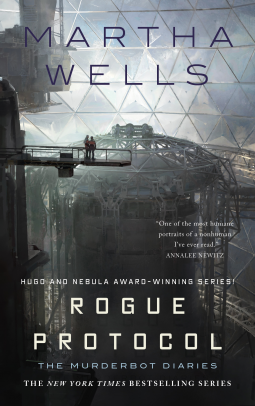 I’m not sure what I can add to the comments of others about Martha Wells’s marvelous series of novellas about Murderbot, the security unit on a journey to humanity. This latest installment shows Murderbot posing as a human security consultant, coming into contact (and sometimes conflict) with military units and other automata, with humans both vile and admirable. I am reminded of a story I recently heard on NPR about how we humans tend to treat mechanical devices (even Roombas) as sentient. I suspect this benefits us more, through the practice of compassion, than it does our household appliances and automobiles. Slowly, Murderbot is learning to do the same.
I’m not sure what I can add to the comments of others about Martha Wells’s marvelous series of novellas about Murderbot, the security unit on a journey to humanity. This latest installment shows Murderbot posing as a human security consultant, coming into contact (and sometimes conflict) with military units and other automata, with humans both vile and admirable. I am reminded of a story I recently heard on NPR about how we humans tend to treat mechanical devices (even Roombas) as sentient. I suspect this benefits us more, through the practice of compassion, than it does our household appliances and automobiles. Slowly, Murderbot is learning to do the same. I can’t wait for the next adventure!
The Spaceship Next Door, by Gene Doucette (Houghton Mifflin Harcourt)
Three years ago, a spaceship landed in a sleepy Connecticut town called Sorrow Falls.
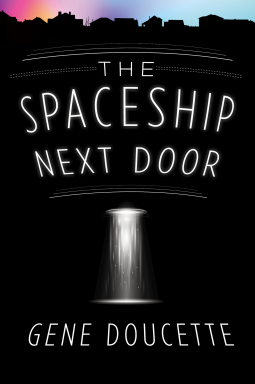 Despite being cordoned off by the US military and despite the concerted efforts of scientists and analysts, absolutely nothing has been learned about the ship, who made it, or why it is here. Well, not quite nothing: anyone attempting to approach the ship becomes obsessed with the pressing need to be somewhere else.
Despite being cordoned off by the US military and despite the concerted efforts of scientists and analysts, absolutely nothing has been learned about the ship, who made it, or why it is here. Well, not quite nothing: anyone attempting to approach the ship becomes obsessed with the pressing need to be somewhere else. Just outside the boundaries of set up by the military, and encampment of RVs is populated by conspiracy theorists who use various kinds of equipment to observe the spaceship, and it is clear that everything they report is a product of their own imagination.
Annie Collins is about as normal a 16 year old girl as possible, considering that her mother is dying of cancer and her father is nowhere in sight. Annie has a gift for making friends, understanding people's motivations, accepting the weirdos conspiracy theorists in the RV camp, and pretty much knowing everything that's going on. So when a military analyst ineptly disguised as a reporter, arrives for yet another investigation of the spaceship, he hires Annie as his native guide. The adventure begins slowly but soon picks up steam when the spaceship starts turning locals and troops alike into zombies who go around asking “Are you her?”
The smoothly flowing prose style captures much of the charm of a small town filled with eccentric characters and a colorful if fictitious history. Annie herself is lovable in her complexity, her vulnerability, and her endless resourcefulness. A highly recommended read, full of inventiveness, humor, and surprising twists, and truly alien aliens.
The usual disclaimer: I received review copies of these books, but no one bribed me to say anything about them.

Published on April 05, 2019 01:00
April 3, 2019
Today's Moment of Art
Published on April 03, 2019 01:00
April 2, 2019
Vonda N. McIntyre
Published on April 02, 2019 08:25
New Story on Curious Fictions

"Bread and Arrows" from Sword and Sorceress XX is now up on Curious Fictions to read free!
Here's the opening...
Celine knelt in front of the brick-lined bread oven, her head and shoulders halfway inside the fire pit. Her probing fingertips scraped against a cracked, unevenly heating floor tile. She took out her stone-wand, hoping she wouldn't have to dismantle the entire oven to make repairs. Nestled in a bucket of warm ashes, her salamander kept up an incessant grumble.
“Fire-go-out! World end!”
The string of bells on the front door of the bakery shop chimed gently, accompanied by the creaking hinge. Celine crawled backwards out of the oven and clambered to her feet. Basalt stood just inside the opened half-door, feet spread apart as if braced against a storm, an expression of disapproval twisting his thin lips.
As if I didn't have enough troubles! First, my moon cycles, then this accursed oven, and now him!
Celine tucked a stray curl back under her widow's coif and tried to pretend Basalt was really here to buy bread. There were a few long-loaves left, arranged on their wooden racks like giant's matchsticks, plus the raspberry tarte her friend Annelys had asked her to make for Herve's name-day and then not picked up. If Basalt would take the tarte and leave, he could have it.
“Cold-cold-cold!” Fireling insisted. “Waiting here for-ever!”

Published on April 02, 2019 01:00
April 1, 2019
Citadels of Darkover Author Interview: Marella Sands
Coming in May 2019
 Strongholds of rock . . . fortresses of the spirit . . . a planet set apart . . .
Strongholds of rock . . . fortresses of the spirit . . . a planet set apart . . .
Citadels can be psychic, emotional, and cultural as well as military, and the wonderfully imaginative contributors to this volume have taken the basic idea and spun out stories in different and often unexpected directions.
Pre-order it at:
ePub https://books2read.com/u/4XRR0N
Kindle https://amzn.to/2TmBBW0
Here I chat with contributor Marella Sands:
Deborah J. Ross: Were there any pivotal moments in your literary journey?Marella Sands: I think finding my writers group was the biggest single thing that happened that changed everything. I had no idea how to edit myself or how to write decent description before I found other writers willing to train me up. My first three novels got the same reaction from the group: the first one hundred pages are boring! Oops! I rewrote a lot of beginnings back then. I took the critiques, rewrote and rewrote and rewrote, and made myself better. My first sale happened within eight months of joining the group. That was in 1991. Yes, we still are together and I'm still a member.
DJR: What inspired your story in Citadels of Darkover?MS: This story grew out of a desire to feature banshees, horses, and arranged marriages in the same tale, partly because I have always been intrigued by the banshees of Darkover. I think the idea of arranged marriages intrigues a lot of people since they're not normally a part of our everyday lives. Also, I've always been interested in the banshees. They're blind, have glow-in-the-dark beaks...and are apparently really, really scary. I wanted to see them up close. The first book I read was Hawkmistress, and I was blown away by the world and, of course, Romilly. Subsequently, it has seemed like I can't get over/around a love for the Ages of Chaos/Hundred Kingdoms eras, so my stories tend to be set then. For my Citadels story, I wanted to set a story at Falconsward in a time just maybe a hundred years or so earlier than Hawkmistress. Maybe that's close as I (and my characters) will come to meeting my Darkover hero.
DJR: Is there another Darkover story you would particularly like to write?MS: I'm fascinated with the Ages of Chaos. There are so many stories that could be told about those times! Because...chaos, right? Clingfire, bone dust, genetic experimentation and breeding programs. The development of the Towers and horrific uses of psionics. There's so much to tap into. I still want to get to a story set in one of the Towers. There's a line in, I think, Two to Conquer (not sure at this point), about the ancient tower keepers creating monsters back in the early days.
DJR: What have you written recently? What is your favorite of your published works and why?MS: I think I am most proud of my anthology Restless Bones because I tried to stretch myself in ways I hadn't before.
DJR: What lies ahead for you? MS: I sold a book to Ring of Fire Press and it should be out in late 2018. It's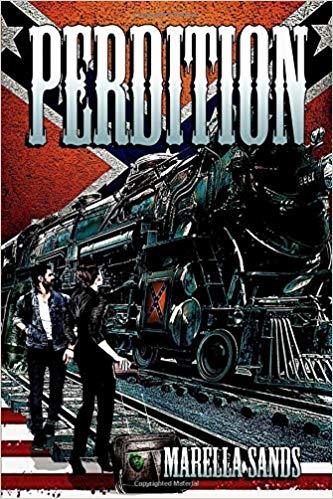 called Perdition, and it's an alternate history about a United States that broke into pieces during the Civil War and never got put back together. It's from an idea Mark Sumner and I had twenty years ago. Back then, we developed the idea into a screenplay that was briefly considered by Turner Pictures before they decided not to buy. Now, it's a novel.
called Perdition, and it's an alternate history about a United States that broke into pieces during the Civil War and never got put back together. It's from an idea Mark Sumner and I had twenty years ago. Back then, we developed the idea into a screenplay that was briefly considered by Turner Pictures before they decided not to buy. Now, it's a novel.
I'm currently working on a sequel to my book Perdition, which was published by Ring of Fire Press in November 2018. The books take place in an alternate US where the country split into several countries after the Civil War. Fellow author Mark Sumner and I created the world 25 years ago but I'm not getting a good chance to play it in until now. One of Mark's original ideas was to show how no one really "won" the war when everything broke down after the McClellan-Davis Accord of 1865. For instance, the Union (or what's left of it) seems quite technologically superior and everyone is (ideally) equal but it's run as a security state where people are encouraged to turn in "collaborators." The niftiest tech is in the hands of the government and is used to spy on its own citizens. In the southeast, security's not such an overpowering issue, slavery was done away with in the 19th century, and there are lots of economic ties with places like Europe. But minorities have been marginalized into their own neighborhoods and can't vote in state or federal elections (and only got the right to vote in local elections fairly recently). So, there's a lot to work with in terms of looking at social issues from different points of view.
Currently, Marella Sands is at work rewriting a novel that is straight fiction with no fantastical elements. She is ready to schedule a yellow fever vaccination so that she can travel to Ghana, and is working on developing a moderate command of Twi so that she can talk to the locals in Accra in something besides English. Her new cat is named in Twi: Afia is the name given to females born (or, in this case, adopted) on a Friday. Marella's Twi name would be Akosua, as she was born on a Sunday.
 Strongholds of rock . . . fortresses of the spirit . . . a planet set apart . . .
Strongholds of rock . . . fortresses of the spirit . . . a planet set apart . . .Citadels can be psychic, emotional, and cultural as well as military, and the wonderfully imaginative contributors to this volume have taken the basic idea and spun out stories in different and often unexpected directions.
Pre-order it at:
ePub https://books2read.com/u/4XRR0N
Kindle https://amzn.to/2TmBBW0
Here I chat with contributor Marella Sands:
Deborah J. Ross: Were there any pivotal moments in your literary journey?Marella Sands: I think finding my writers group was the biggest single thing that happened that changed everything. I had no idea how to edit myself or how to write decent description before I found other writers willing to train me up. My first three novels got the same reaction from the group: the first one hundred pages are boring! Oops! I rewrote a lot of beginnings back then. I took the critiques, rewrote and rewrote and rewrote, and made myself better. My first sale happened within eight months of joining the group. That was in 1991. Yes, we still are together and I'm still a member.
DJR: What inspired your story in Citadels of Darkover?MS: This story grew out of a desire to feature banshees, horses, and arranged marriages in the same tale, partly because I have always been intrigued by the banshees of Darkover. I think the idea of arranged marriages intrigues a lot of people since they're not normally a part of our everyday lives. Also, I've always been interested in the banshees. They're blind, have glow-in-the-dark beaks...and are apparently really, really scary. I wanted to see them up close. The first book I read was Hawkmistress, and I was blown away by the world and, of course, Romilly. Subsequently, it has seemed like I can't get over/around a love for the Ages of Chaos/Hundred Kingdoms eras, so my stories tend to be set then. For my Citadels story, I wanted to set a story at Falconsward in a time just maybe a hundred years or so earlier than Hawkmistress. Maybe that's close as I (and my characters) will come to meeting my Darkover hero.
DJR: Is there another Darkover story you would particularly like to write?MS: I'm fascinated with the Ages of Chaos. There are so many stories that could be told about those times! Because...chaos, right? Clingfire, bone dust, genetic experimentation and breeding programs. The development of the Towers and horrific uses of psionics. There's so much to tap into. I still want to get to a story set in one of the Towers. There's a line in, I think, Two to Conquer (not sure at this point), about the ancient tower keepers creating monsters back in the early days.
DJR: What have you written recently? What is your favorite of your published works and why?MS: I think I am most proud of my anthology Restless Bones because I tried to stretch myself in ways I hadn't before.
DJR: What lies ahead for you? MS: I sold a book to Ring of Fire Press and it should be out in late 2018. It's
 called Perdition, and it's an alternate history about a United States that broke into pieces during the Civil War and never got put back together. It's from an idea Mark Sumner and I had twenty years ago. Back then, we developed the idea into a screenplay that was briefly considered by Turner Pictures before they decided not to buy. Now, it's a novel.
called Perdition, and it's an alternate history about a United States that broke into pieces during the Civil War and never got put back together. It's from an idea Mark Sumner and I had twenty years ago. Back then, we developed the idea into a screenplay that was briefly considered by Turner Pictures before they decided not to buy. Now, it's a novel.I'm currently working on a sequel to my book Perdition, which was published by Ring of Fire Press in November 2018. The books take place in an alternate US where the country split into several countries after the Civil War. Fellow author Mark Sumner and I created the world 25 years ago but I'm not getting a good chance to play it in until now. One of Mark's original ideas was to show how no one really "won" the war when everything broke down after the McClellan-Davis Accord of 1865. For instance, the Union (or what's left of it) seems quite technologically superior and everyone is (ideally) equal but it's run as a security state where people are encouraged to turn in "collaborators." The niftiest tech is in the hands of the government and is used to spy on its own citizens. In the southeast, security's not such an overpowering issue, slavery was done away with in the 19th century, and there are lots of economic ties with places like Europe. But minorities have been marginalized into their own neighborhoods and can't vote in state or federal elections (and only got the right to vote in local elections fairly recently). So, there's a lot to work with in terms of looking at social issues from different points of view.
Currently, Marella Sands is at work rewriting a novel that is straight fiction with no fantastical elements. She is ready to schedule a yellow fever vaccination so that she can travel to Ghana, and is working on developing a moderate command of Twi so that she can talk to the locals in Accra in something besides English. Her new cat is named in Twi: Afia is the name given to females born (or, in this case, adopted) on a Friday. Marella's Twi name would be Akosua, as she was born on a Sunday.

Published on April 01, 2019 01:00
March 29, 2019
Windows into the Past: Fossils and Star Relics
Here's a collection of recent science stories that deepen our understanding of the past, both here on Earth and in the heavens.
'Treasure trove' of dinosaur footprints found in southern England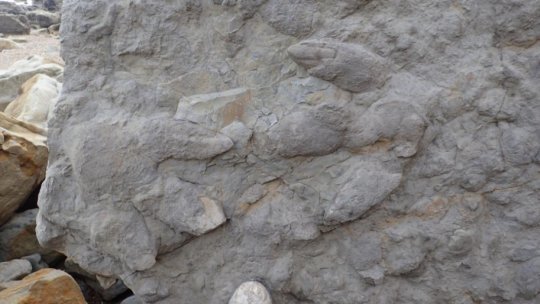
More than 85 well-preserved dinosaur footprints -- made by at least seven different species -- have been uncovered in East Sussex, representing the most diverse and detailed collection of these trace fossils from the Cretaceous Period found in the UK to date. The footprints date from the Lower Cretaceous epoch, between 145 and 100 million years ago, with prints from herbivores including Iguanodon, Ankylosaurus, a species of stegosaur, and possible examples from the sauropod group (which included Diplodocus and Brontosaurus); as well as meat-eating theropods.
New discovery pushes origin of feathers back by 70 million years
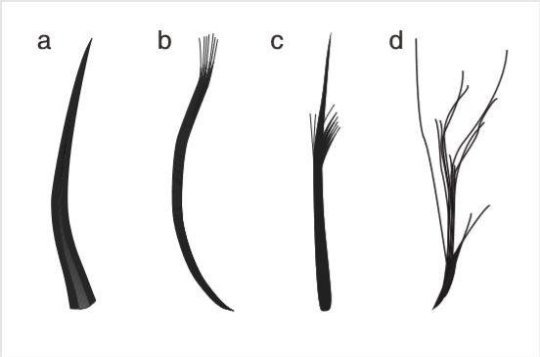 An international team of palaeontologists, which includes the University of Bristol, has discovered that the flying reptiles, pterosaurs, actually had four kinds of feathers, and these are shared with dinosaurs -- pushing back the origin of feathers by some 70 million years. Pterosaurs are the flying reptiles that lived side by side with dinosaurs, 230 to 66 million years ago. It has long been known that pterosaurs had some sort of furry covering often called 'pycnofibres', and it was presumed that it was fundamentally different to feathers of dinosaurs and birds.
An international team of palaeontologists, which includes the University of Bristol, has discovered that the flying reptiles, pterosaurs, actually had four kinds of feathers, and these are shared with dinosaurs -- pushing back the origin of feathers by some 70 million years. Pterosaurs are the flying reptiles that lived side by side with dinosaurs, 230 to 66 million years ago. It has long been known that pterosaurs had some sort of furry covering often called 'pycnofibres', and it was presumed that it was fundamentally different to feathers of dinosaurs and birds.
Fossil from the Big Bang discoveredRare relic is one of only three fossil clouds known in the universe
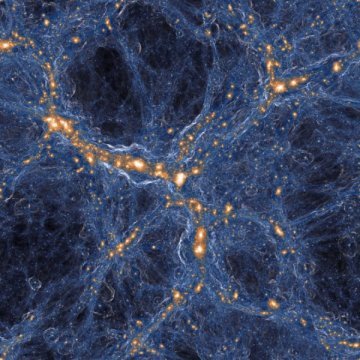 A relic cloud of gas, orphaned after the Big Bang, has been discovered in the distant universe by astronomers using the world's most powerful optical telescope, the W. M. Keck Observatory on Maunakea, Hawaii. "Everywhere we look, the gas in the universe is polluted by waste heavy elements from exploding stars," says Robert. "But this particular cloud seems pristine, unpolluted by stars even 1.5 billion years after the Big Bang."
A relic cloud of gas, orphaned after the Big Bang, has been discovered in the distant universe by astronomers using the world's most powerful optical telescope, the W. M. Keck Observatory on Maunakea, Hawaii. "Everywhere we look, the gas in the universe is polluted by waste heavy elements from exploding stars," says Robert. "But this particular cloud seems pristine, unpolluted by stars even 1.5 billion years after the Big Bang."
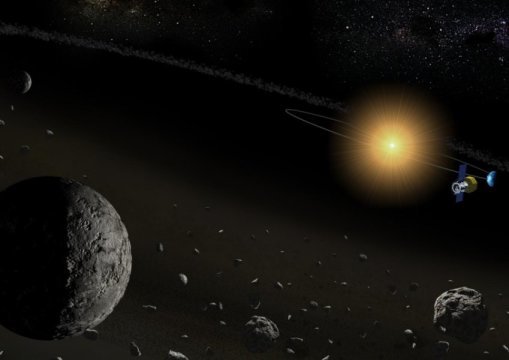
Space telescope detects water in a number of asteroids
Our Earth is an aqua-planet, and is the only planet in our solar system where the presence of water on the planet surface has been confirmed. We are, however, not yet sure how our Earth acquired water. Recent studies have shown that other celestial bodies in our solar system have, or used to have, water in some form. Asteroids are considered to be one of the candidates that brought water to Earth. Note that the liquid water is not flowing on the surface of asteroids, but water is retained in asteroids as hydrated minerals, which were produced by chemical reactions of water and anhydrous rocks that occurred inside the asteroids, that is, aqueous alteration. Hydrated minerals are stable even above the sublimation temperature of water ice. Thus, by looking for hydrated minerals, we can investigate whether asteroids have water.
'Treasure trove' of dinosaur footprints found in southern England

More than 85 well-preserved dinosaur footprints -- made by at least seven different species -- have been uncovered in East Sussex, representing the most diverse and detailed collection of these trace fossils from the Cretaceous Period found in the UK to date. The footprints date from the Lower Cretaceous epoch, between 145 and 100 million years ago, with prints from herbivores including Iguanodon, Ankylosaurus, a species of stegosaur, and possible examples from the sauropod group (which included Diplodocus and Brontosaurus); as well as meat-eating theropods.
New discovery pushes origin of feathers back by 70 million years
 An international team of palaeontologists, which includes the University of Bristol, has discovered that the flying reptiles, pterosaurs, actually had four kinds of feathers, and these are shared with dinosaurs -- pushing back the origin of feathers by some 70 million years. Pterosaurs are the flying reptiles that lived side by side with dinosaurs, 230 to 66 million years ago. It has long been known that pterosaurs had some sort of furry covering often called 'pycnofibres', and it was presumed that it was fundamentally different to feathers of dinosaurs and birds.
An international team of palaeontologists, which includes the University of Bristol, has discovered that the flying reptiles, pterosaurs, actually had four kinds of feathers, and these are shared with dinosaurs -- pushing back the origin of feathers by some 70 million years. Pterosaurs are the flying reptiles that lived side by side with dinosaurs, 230 to 66 million years ago. It has long been known that pterosaurs had some sort of furry covering often called 'pycnofibres', and it was presumed that it was fundamentally different to feathers of dinosaurs and birds.Fossil from the Big Bang discoveredRare relic is one of only three fossil clouds known in the universe
 A relic cloud of gas, orphaned after the Big Bang, has been discovered in the distant universe by astronomers using the world's most powerful optical telescope, the W. M. Keck Observatory on Maunakea, Hawaii. "Everywhere we look, the gas in the universe is polluted by waste heavy elements from exploding stars," says Robert. "But this particular cloud seems pristine, unpolluted by stars even 1.5 billion years after the Big Bang."
A relic cloud of gas, orphaned after the Big Bang, has been discovered in the distant universe by astronomers using the world's most powerful optical telescope, the W. M. Keck Observatory on Maunakea, Hawaii. "Everywhere we look, the gas in the universe is polluted by waste heavy elements from exploding stars," says Robert. "But this particular cloud seems pristine, unpolluted by stars even 1.5 billion years after the Big Bang."
Space telescope detects water in a number of asteroids
Our Earth is an aqua-planet, and is the only planet in our solar system where the presence of water on the planet surface has been confirmed. We are, however, not yet sure how our Earth acquired water. Recent studies have shown that other celestial bodies in our solar system have, or used to have, water in some form. Asteroids are considered to be one of the candidates that brought water to Earth. Note that the liquid water is not flowing on the surface of asteroids, but water is retained in asteroids as hydrated minerals, which were produced by chemical reactions of water and anhydrous rocks that occurred inside the asteroids, that is, aqueous alteration. Hydrated minerals are stable even above the sublimation temperature of water ice. Thus, by looking for hydrated minerals, we can investigate whether asteroids have water.

Published on March 29, 2019 01:00

